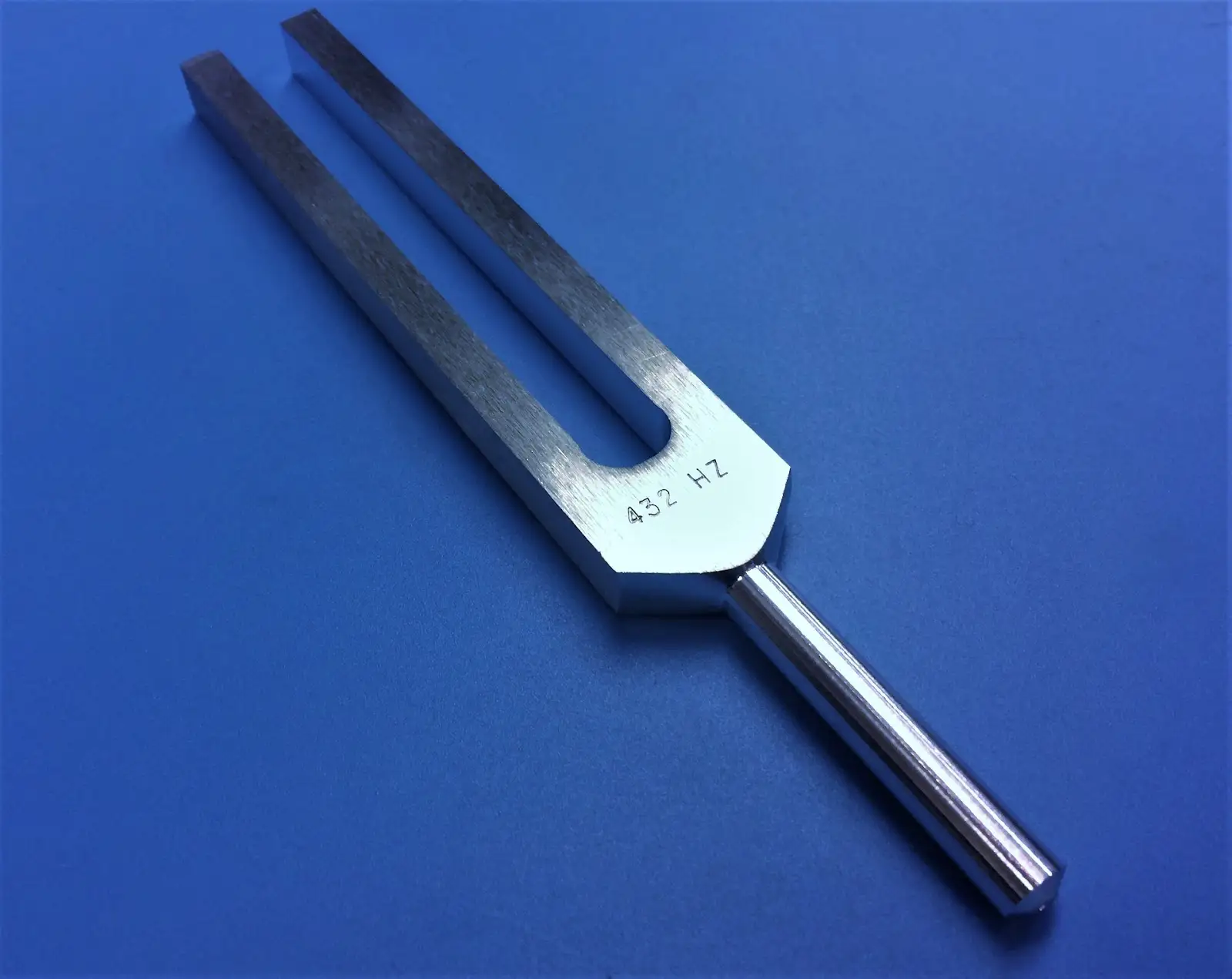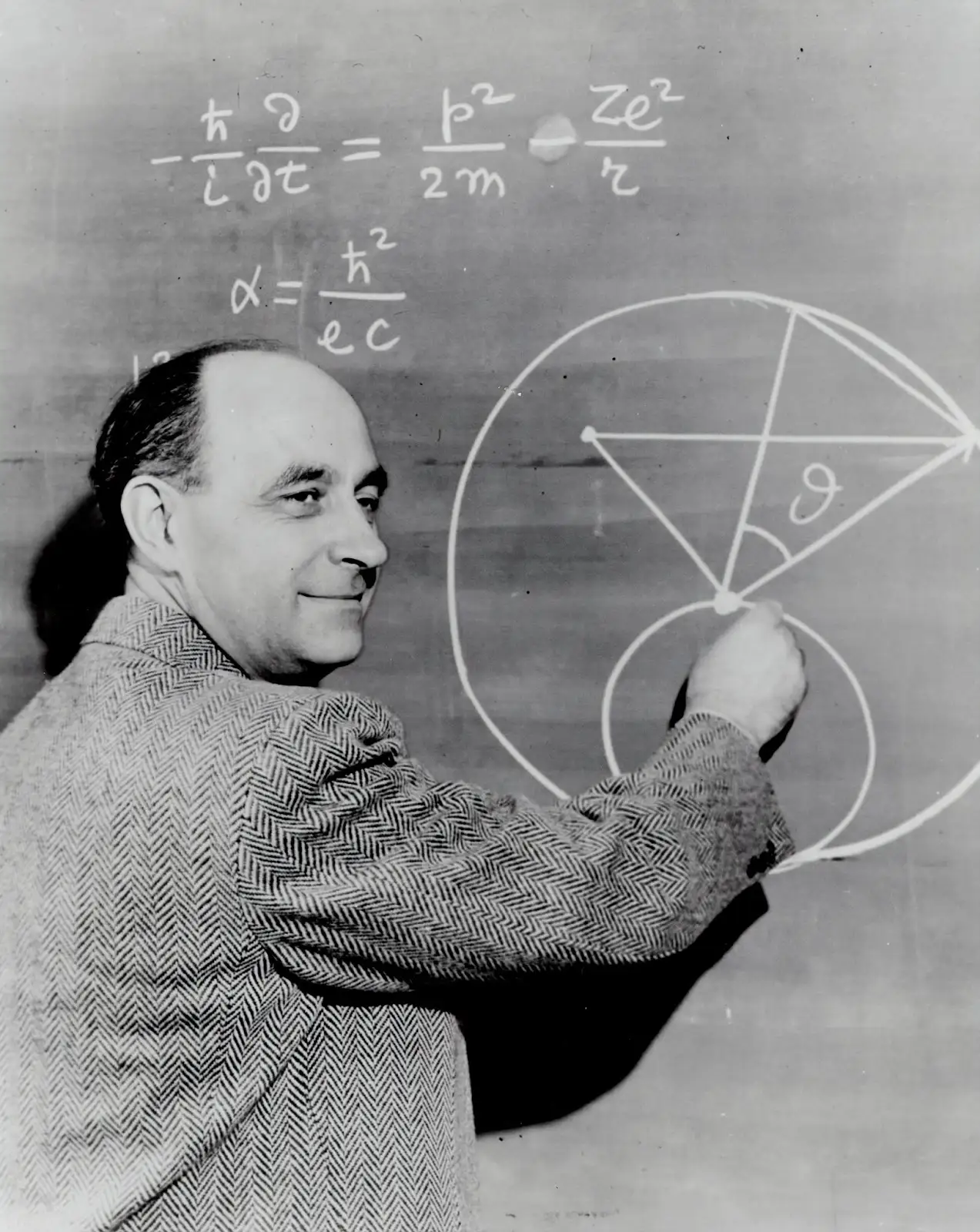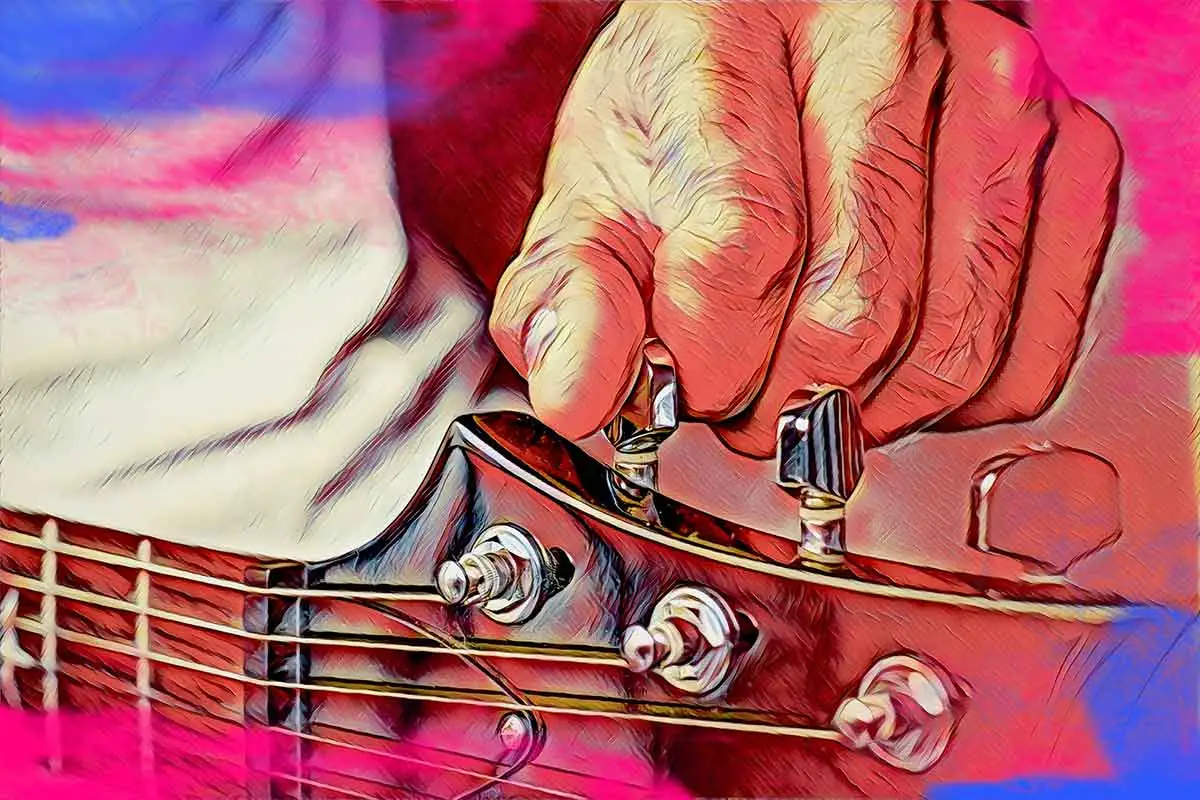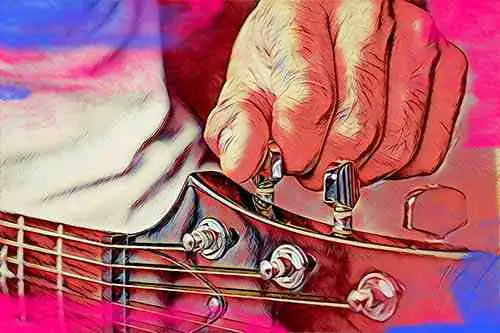It's a long-standing debate among musicians, audio engineers, acoustic physicists, and pseudo-scientists: which tuning standard is the "right one?" A4= 440 Hz or A4= 432 Hz? In many ways, the debate seems to be over - 440 Hz has been the common tuning standard in most parts of the world for several decades. Still, there remains a group of contrarians, audio enthusiasts, and true believers who prefer 432 Hz, or at least want to see this alternative tuning standard become more accepted by modern ears.
In this blog, we'll discuss the historical rise of 440 Hz as today's concert pitch, the real and perceived differences between 440 and 432 Hz, and why some people prefer one tuning standard over the other.
How A4 = 440 Hz Became the Standard: A Brief History
Standards emerge for a host of arbitrary and evidence-based reasons alike - regardless of these reasons, something ultimately becomes standard practice because enough people (especially those with authority and status) agree upon it. The standard tuning of A4= 440 Hz is no exception to this rule.
The short version of the history is as follows: In the 20th century, a group of influential musicians and physicists worldwide gathered and agreed to set A4= 440 Hz as the standard tuning for orchestras moving forward. The complete history of this standardization, of course, is far more robust, and begins a long, long time ago.
We'll keep it brief by touching on the main players and events that built this rich history.
The Pythagorean Intonation
Pythagoras, ancient philosopher and mathematician famous for his theorem regarding right angles, also had a deep interest in music. Though it's unclear who exactly is responsible for what became known as Pythagorean tuning, it's believed Pythagoras developed the tuning system using the ratio of 3:2 as the basis for perfect fifth harmonies (hence why it's named after him).
The 3:2 interval ratio found in Pythagorean tuning also informs a distinct but similar concept known as Pythagorean temperament, a 12-tone system based on a stack of perfect fifths.
In this system, when D is tuned at 288 Hz, the note A (the perfect fifth of D) must amount to 432 Hz because it is 3/2 (or 1.5) times the frequency of D (288 Hz x 1.5 = 432 Hz). Herein lies an early mathematical argument in favor of A4= 432 Hz.
Of course, music went on to evolve in major ways since the 6th Century B.C.E. Pythagorean tuning only accounted for four consonant intervals (octaves, fifths, fourths, and unisons). Modern music is filled with numerous imperfect consonances, such as major/minor thirds, minor/major sixths, minor seconds, and minor sevenths - intervals that couldn't be achieved with the limitations of Pythagorean intonation alone .
An Aside on Hertz
Before we go further, it's worth noting that "Hertz" (cycles per second) as a measurement of frequency and pitch wasn't on anyone's radar back then - certainly not in Ancient Greece, but in fact not until the late 16th Century when seconds started being used as a unit of time . It wasn't until 1834 that the invention of the Savart Wheel and Tonometer brought the measurement of cycles per second into focus. And it would take nearly another century (1930) for the emergence of the term "Hertz," coined after Heinrich Hertz (popular music YouTuber and producer Rick Beato has a short but sweet overview of this history here ).
In other words, musicians and scientists wouldn't have thought about the 432 vs. 440 Hz debate in the same way we do today. Instead, they focused on ratios and intervals, and used instruments like tuning forks as reference for pitch.
What was Going on in Germany
Some of the discourse around 432 Hz vs 440 Hz can be traced back to Germany beginning in the 17th century, before Heinrich Hertz' time. Things were so different back then that certain pipe organs were tuned to what would have been something like A = 567 Hz, which seems way off (567 Hz would yield a flat D by today's standards). Mozart, on the other hand, experimented with different frequency standards, such as 421 and 422 Hz, based on a tuning fork believed to have been his (some believe that he preferred 432 Hz but this seems to be a misconception).
Germany would eventually make its way to 440 Hz tuning with much of the rest of Europe and the U.S. around World War 2, which we'll discuss next. Unfortunately, the rise of the Nazi party in the 1930s would lead some to conflate the standardization to 440 Hz with the party's obsession with order and purity - in truth, these matters are unrelated.
Europe and The French Standard
Different countries set their own tuning standards until around the mid-19th Century, and many of these standards weren’t strictly codified.
It wasn’t until 1859 that France deemed A4 = 435 Hz the law of the land, which was the same for Italy until 1885 when they decided to bump it up to 440 Hz (some regions set A4 as high as 450 Hz as their standard).
A few decades later, in 1917, the U.S. hopped on board with the Italians.
And then, in the 1950s, the International Organization for Standardization officially recognized A4 = 440 as “concert pitch” after first recommending it in 1939, and the world has largely stuck with it since.
Standardization and Globalization

In a way, these international tuning disputes mirrored the global conflicts and resolutions occurring around the same time. A more united and open world meant a more united sense of sound. This global standardization also made practical and economic sense.
With specifications in place, instruments could be more easily manufactured and sold across the world. Even if musical stylings are different in the East and West, a piano bought or sold in either location will be tuned to A = 440 Hz (generally speaking).
However, some people would take this standardization as a militant and stifling imposition on music's nature - in some cases, even, a grand conspiracy theory designed to control hearts and minds. While these schemes aren't backed up by any real evidence, people continue to argue in favor of 432 Hz over 440 hz for various reasons.
432 vs 440: The Great Debate

Universally accepted conventions like A4 = 440 Hz may make a big difference in popular culture, manufacturing, and trade, but art doesn't have to yield to such standards. As such, 432 Hz remains a viable tuning option and personal preference for some, even if it's a bit of a dark horse with shaky justifications.
Let’s take the plunge into the great debate that surrounds 440 Hz and 432 Hz.
What is 432 Hz, Anyway?
If you’ve ever used a tuner to calibrate an instrument, you might have noticed a seemingly random number somewhere on the screen: “440,” often followed by the letters “Hz” (shorthand for “Hertz”). Unless you’ve got a background in acoustic physics or music theory, though, 440 Hz probably seems like gibberish. Yet, it’s merely another way of describing the note A; A4, in particular (which occurs above middle C).
Every sound we hear is merely a vibration that occurs through a medium (i.e., gas, liquid, or solid) and is received by our ears, then processed by our brains. A sound that vibrates at 440 cycles per second would be said to hum at 440 Hz. This is what sounds like A4 by modern standards.
Of course, a sound that’s humming 432 Hz will also sound like A4, just pitched a bit lower than what you’re probably used to. If you go even lower to around 415 Hz, though, you’ll be in G sharp or A flat territory. In other words, notes with a lower pitch have a lower frequency (measured in Hz), while higher notes have a higher frequency.
Put simply, 432 Hz is a specific pitch that we can classify as one version of the note A4. The term "432 Hz" is often used as shorthand for the tuning standard that's based on A4 = 432 Hz rather than A4 = 440 Hz (also known as "concert pitch" today). By setting A4 at 432 Hz rather than 440 Hz, every other note must be shifted down from accordingly for proper tuning, so B4 drops from 493.88 Hz to 484.90 Hz, C5 falls from 523.25 Hz to 513.74 Hz, and so on.
Why do Some People Prefer 432 Hz Over 440 Hz as a Tuning Standard?
If 440 Hz has been the standard for well over half a century, why do some people swear by 432 Hz (including Verdi, supposedly)?
As you might imagine, there’s no single answer to this question. It’s kind of like asking why some people prefer poetry over fiction or why two people can stare at a painting and come away with totally different interpretations; it’s subjective.
That isn’t to say people don’t have their reasons for clinging to 432 Hz, however. As mentioned earlier, musicians across time preferred to tune their instruments in various ways for intuitive, practical, mathematical, and even spiritual reasons. Whether or not these reasons carry any water is up for debate, but they’re still worth exploring.
Is Either Tuning Standard Superior?
Ultimately, composers and producers are concerned with what sounds best. So, does A4 = 432 Hz actually yield a better sound than A= 440 Hz? Once again, this is a matter of personal preference, though the untrained ear might not even notice much of a difference.
Our experiences inform our likes and dislikes. And if we’re used to something, we tend to have a natural affinity for it by default. So, if you’ve been listening to A4 = 440 Hz music all your life (which describes most of us at this point), this tuning standard will probably appeal to you more than any alternative. That said, for physiological reasons, you might simply resonate more with 432 Hz music.
What Does 432 Hz Sound Like in Practice?
Distinguishing between 440 and 432 Hz can be challenging without hearing some examples firsthand. Fortunately, telling the two apart and trying them out yourself is easier now than ever before with the help of online resources and digital audio workstations (DAWs) .
In this video by Paul Davids, you can hear a back-to-back rendition of "Ode to Joy," first played in standard (440 Hz) tuning and then in 432 Hz (he does the same for a few other songs, too).
Hearing the same piece played back to back in two different tunings is somewhat jarring at first. The flattened tonality of the 432 Hz rendition might sound off-putting initially, but once your ear adjusts, the song basically sounds just as you would expect it to.
Similarly, if you then hop back to the 440 Hz version, the sharpness might come off as unpleasant for a little while before you settle back in. This contrast clearly expresses the difference between these two tuning standards, and also suggests something about the way we perceive information.
Ryan Booher also has a fun and interesting video that tests the audience's ability to intuit the difference between A4 = 440 Hz and A4 = 432 Hz tunings.
After playing some A/B tests of different riffs, he reveals which version was played in which type of tuning. Unless you've got a great ear, odds are you'll get at least one wrong (example fatigue, anyone?). The "cheat," of course, is that the flatter version of a given example is tuned to 432 Hz while the sharper version is tuned to 440 Hz.
So, do the above examples prove that there's no significant difference between these tuning standards? Does it indicate that it's all just arbitrary? Not exactly.
After hearing these various back-to-back samples, most people can identify differences based on the way they're tuned. Once a standard is set, however, most of us won't intrinsically notice much of a real difference, let alone accept one as preferable to the other. Context and contrast uncover the subtle but real differences between them.
Are there any Benefits to Using A4 = 432 Hz
As we'll discuss below, some people feel that simply listening to music tuned to A4 = 432 Hz has certain tangible and metaphysical benefits. While the jury is out on many of these assertions, there are some real advantages to trying out various tunings, such as 432 Hz.
For starters, playing or recording music in a standardized pitch other than A4= 440 Hz produces a unique sound. Even if the difference isn't noticeable to the average listener, your songs might carry a rare flavor by fleeing from the pack in this way (you're bound to confuse anyone trying to cover your song without prior knowledge of the difference in tuning, too).
Additionally, exploring different tuning standards can help you discover new things about tonality and spark your creative impulses. You might even overcome a case of writer's block by re-tuning different instruments or messing around with different frequencies for a change.
Lastly, if you truly believe that the resonance of 432 Hz induces positive physical and emotional sensations (regardless of what data suggests), then listening to and creating music in this tuning standard might bring you comfort (essentially a placebo effect).
432 Hz or 440 Hz: A Difference of Opinions

Subjectivity aside, some listeners and musicians claim that 432 Hz music intrinsically derives from nature and even contains healing properties. As of now, there is no scientific backing to these claims, but proponents of 432 Hz often turn to pseudo-scientific studies like numerology to justify their beliefs.
On the other hand, 440 Hz sticklers sometimes throw the baby out with the bathwater in favor of uniformity.
Let's examine and dissect four arguments commonly found in this debate between 432 and 440 Hz.
1: Is There Something Natural or Mathematically Correct About 432 Hz?

The appeal to nature primarily derives from a measurable phenomenon known as the Schumann resonance, storm-induced electromagnetic waves that are either equal to or a multiple of the Earth’s circumference to resonate. When you calculate the fundamental frequency of these waves, you end up with approximately 7.83 Hz (often called the “Earth’s heartbeat”). Some people then round this frequency to 8 Hz out of convenience, noting that 432 is divisible by 8.
In other words, 432 Hz is believed to be “in tune” with the Earth and, therefore, more spiritually uplifting. Of course, the number 8 also goes into 440, so this is a dubious and manipulative claim. So, either 432 and 440 Hz are both “resonant with the world,” or the point is irrelevant.
These naturalistic and numerological notions don’t end there, however. Some true believers in 432 Hz supremacy relate 432 Hz to the diameter of the moon, sun, and other celestial objects. Others use different mathematical concepts to advocate for the superiority of 432 Hz, such as prime number summation and so on.
While it’s amusing to find these connections and crunch numbers, it mostly seems to amount to coincidence and confirmation bias. That said, who knows what further research will reveal about pitch and the relationship between notes and other phenomena? It’s best to leave the door open while always remaining skeptical.
2: Does 432 Hz Have Physical or Spiritual Healing Properties?

The argument in favor of 432 Hz tuning's ability to improve one's quality of life is somewhat correlated with the previous arguments regarding nature and numerology. However, various scientific studies perhaps lend some credence to the notion that this lower tuning standard actually contains wellness properties.
The four studies that point to these benefits most strongly all come from Italy, spanning 2016 to 2020. Each study tested the differences between 440 Hz and 432 Hz interventions for different purposes.
The 2016 study measured the influence of 432 Hz music on perceived anxiety during endodontic treatment . The next study (2017) measured the effects of different music frequencies on rats , namely weight gain. In 2019, a double-blind study was conducted that evaluated how 440 Hz and 432 Hz music affected vital parameters in the human body such as blood pressure, oxygen saturation, respiratory rate values, and more. And the most recent study (2020) specifically tested quality of sleep in patients with spinal cord injuries , comparing 440 Hz music to 432 Hz music.
Ultimately, the 2016, 2019, and 2020 studies concluded that patients who received 432 Hz audio interventions tended to fare better than those who received 440 Hz interventions - overall, members in the 432 Hz groups experienced a slight decrease in heart rate and blood pressure values and tended to sleep better than their counterparts in the 440 Hz camp. As for the 2017 study, rats in both experimental groups gained weight, but at a slightly higher rate among the 440 Hz crowd.
Do these studies prove that 432 Hz is better for the mind, body, and soul? Scientists claim that more research needs to be done to further examine the potential positive effects of 432 Hz music. Still, the research is fascinating, and future studies will only reveal more.
3: Is 432 Hz Complete Nonsense?
Some of the more out-there arguments in favor of 432 Hz can sour some on the whole project. But while there may be nothing mystical or superior about 432 Hz (or 440 Hz, for that matter), it’s worth experimenting with alternative tunings to challenge yourself and keep those creative juices flowing.
In other words, don't knock 432 Hz just because some people believe in it for wacky reasons, and don't cling to 440 Hz because it's "normal." Instruments tuned to 432 Hz can produce interesting results.
4: Does this Debate Matter at All?
Some cynical and/or exhausted audiophiles argue that this entire debate is pointless. They might be right to some degree. After all, music is subjective and can be played with and enjoyed in an infinite number of ways.
However, what people in this camp forget is that standardization has a real impact on the way we create and consume art. While the arguments for and against particular tuning standards might bore or annoy you, they contribute to the greater story of musical evolution.
You can take it for granted that 440 Hz is the current standard, but understanding why it is and why it could be something else in another universe enriches you as a musical citizen.
440 vs. 432 Hz FAQs
How can you tune instruments to 432 Hz?
In most DAWs, you can adjust the tuning standard/software instrument pitch. In Logic Pro X, for instance, you can enter “Project Settings,” “Tuning,” and then slide the horizontal meter down to 432 Hz (or whatever alternate tuning you want). And if you don’t have a tuner or DAW on hand, you can find videos online that will help you tune an instrument to this standard by playing back each note.
Also, if you want to try tuning musical instruments to 432 Hz the old school way, you can purchase a 432 Hz tuning fork and match its resonance.
Can you convert music from 440 to 432 Hz?
Yes, you can, though results may vary. There are websites out there that can convert 440 Hz music to 432 Hz, though we can't speak to their reliability or security. You can also pitch shift audio using the free audio editing software Audacity . You simply need to select the audio in question and use its built-in "Change Pitch" tool to convert its frequency from 440 to 432 Hz.
How can you tell if a song is tuned to A4 = 432 Hz?
The easiest way to identify a 432 Hz recording is to either try playing along with it with an instrument tuned to 432 Hz (usually after realizing your 440 Hz tuning is too sharp compared to the song), or comparing it to the output of a precision signal generator that's tuned to the song's key.
Do any notable artists use A4 = 432 Hz in their work?
A4 = 432 Hz may not be the norm, but it's been used in more songs than you probably realize. Jimi Hendrix preferred 432 Hz, Childish Gambino's "Redbone" is tuned to 432 Hz, Megadeth's album "Peace Sells but Who's Buying" is in 432 Hz - the list goes on to include artists like Coldplay, Metallica, Jacob Collier, and many others.
What note is 432 Hz?
A sound played at 432 Hz is technically the note "A" ("A4," more specifically). Compared to A4 = 440 Hz, however, the pitch of 432 Hz will sound a bit flat. Neither version of A4 is inherently "correct" or "pure," but rather a matter of convention and subjectivity.
The Bottom Line on A4 = 432 Hz

What began as a fairly arbitrary difference in tuning preferences has since ballooned into a full-blown internet conspiracy. It can be both fun and frustrating to read random people’s opinions regarding this matter. Whatever you do, though, try not to get too caught up in the drama or misinformation. Instead, realize that A4 = 440 Hz isn’t the only tuning standard out there and that messing around with an alternative tuning like A4 = 432 Hz can open your eyes to new possibilities and sounds.
Now that it’s easier than ever before to switch your settings to 432 Hz, why not see what this tuning has to offer?






